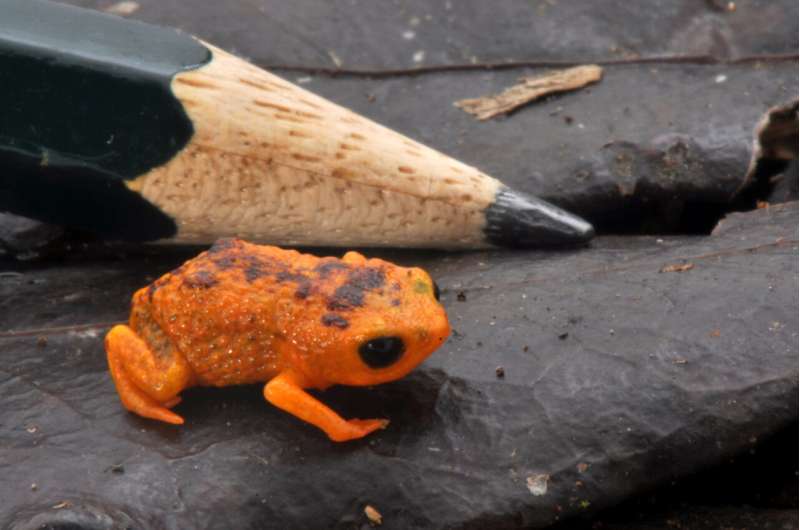June 16, 2022 report
Tiny Brazilian frogs are poor jumpers because their ear canals are too small

A team of researchers affiliated with several institutions in the U.S. and Brazil has found evidence that pumpkin toadlets (Brachycephalus) have poor jumping skills because their inner ear canals are too small. In their paper published in the journal Science Advances, the group describes their study of the inner-ear anatomy of nearly 150 frogs and toads. The researchers believe that the inner ear canals of pumpkin toadlets are too small to allow them to land gracefully.
Pumpkin toadlets are native to parts of Brazil—they are tiny, coin-sized frogs that are known for their ridiculously awful landing skills after jumping. Slow motion video shows that they make no attempt to orient themselves after jumping into the air, crash landing helter-skelter into whatever surface they encounter. Suspecting that their troubles may lie with the inner ear, the researchers engaged in a study of the semicircular inner ear canals of 147 types of toads and frogs.
The inner ear canal in animals is semicircular in shape and filled with liquid. As the animal moves, the liquid is jostled, stimulating nerve cells that line the canal. This confers a sense of balance.
In their study, the researchers found that pumpkin toadlets had the smallest semicircular canals of all the creatures they studied. And their high-speed cameras produced slow-motion videos revealing that changes in the rotation speed of the tiny frogs were the lowest among the group. High rotation speeds are needed by jumping creatures to give them time to orient themselves before they return to the ground. They note that prior work demonstrated that toads with impaired inner ear canals landed much like pumpkin toadlets.
The researchers suggest that as the ear canal in the tiny frogs evolved to become smaller, the canal contained less fluid, making it more difficult for it to jiggle and flow, resulting in less of a sensation of balance. In the frogs, this results in reduced ability to rotate to a good landing position. The researchers further suggest that because the frog still exists, it must have developed some other means of self-preservation, such as developing toxic skin, camouflage or even thicker skin.
More information: Richard L. Essner et al, Semicircular canal size constrains vestibular function in miniaturized frogs, Science Advances (2022). DOI: 10.1126/sciadv.abn1104
Journal information: Science Advances
© 2022 Science X Network





















